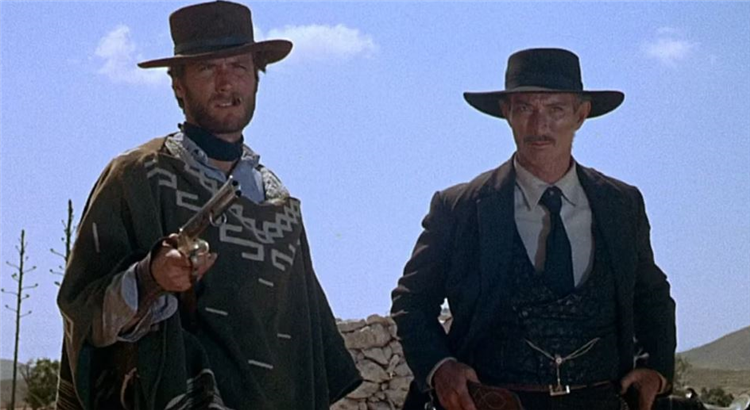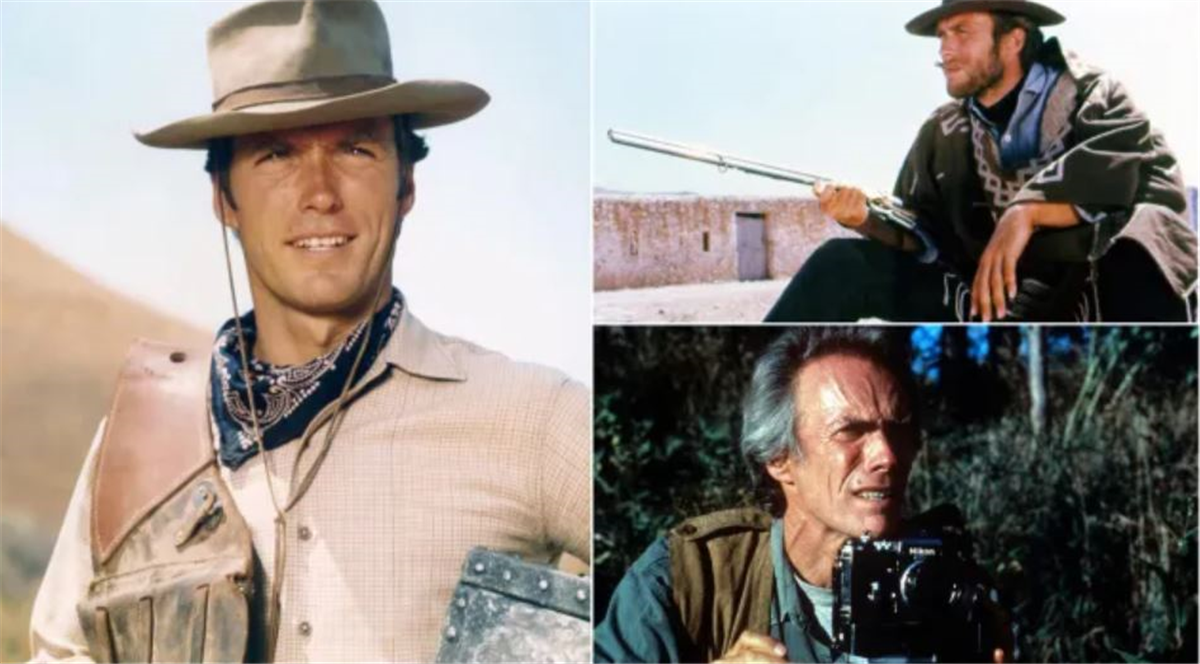In 1964, Clint Eastwood’s career rose to prominence as he starred as the Man With No Name in Sergio Leone’s Spaghetti Western, A Fistful of Dollars, later returning for a complete trilogy. In the decades that followed, he established himself as Hollywood’s leading action star, becoming a symbol of masculinity through roles like Dirty Harry and Josey Wales. Despite being known for relatively grounded stories, one of the star’s best movies embraced the supernatural — but he has never returned to it since.
When it comes to Clint Eastwood’s career, both as an actor and director, grit and realism have been the norm. While his movies are often exaggerated takes on their genre, their stories are fairly rooted in reality, albeit requiring some suspension of disbelief at times. From the Man With No Name to Will Munny and Walt Kowalski, the actor increasingly became known for his gruff and gritty persona, something that got better with age. However, not all of his roles were as realistic as his dramas and thrillers, and the 1980s saw him turn in a performance as a supernatural gunslinger. Despite the movie’s quality and lasting positive reception, the actor hasn’t taken on a paranormal role since 1985.
Clint Eastwood Owes His Legendary Career to Westerns
While Clint Eastwood’s modern work has largely been defined through dramas and thrillers, with more praise for his work as a director, he was once the undisputed leading Western star as John Wayne aged out of film, later passing away. Best known for movies like Hang ‘Em High, The Outlaw Josey Wales and High Plains Drifter, his performances often delivered a sense of grit and darkness to the West. As his career continued, Eastwood took on projects that were as much a commentary on the West as anything else, as perfected in 1992’s Unforgiven, which picks apart the gunslinger mythos. Despite this movie’s fixation with bringing realism to the genre, it stands in stark contrast with the actor’s sole ’80s Western, a decade where he paid more attention to thrillers. This era produced a great contrast in his body of work, with the actor tackling comedy, erotic thriller, action, romance and horror-Western — showcasing his versatility.
Before Clint Eastwood arrived on the scene, the Western genre had largely been defined by John Wayne movies. Often taking on the role of a heroic lawman, noble gunfighter or soldier, Wayne was the face of the classic and epic Western genres — and his style stood in contrast to Eastwood’s morally-ambiguous revisionist antiheroes. As Eastwood’s career rose and he gained control of more of his projects as director, he started to put his revisionist take on several iconic Westerns — and his ’80s Western turned into one of the genre’s most important films for a ghostly modernization. As great as this movie was, it remains something of a black sheep in Eastwood’s career, one of only two supernatural projects in his career.
Pale Rider Is the Best ’80s Western

Pale Rider tells the story of a small gold prospecting community outside LaHood, an area named after its ruthless land baron owner, Coy LaHood. In order to steal the land and its gold out from under them, the villain sends his band of hired guns into the area to harass and intimidate its residents into fleeing. After one particularly violent assault, a teenage girl, Megan, prays to God for help — with her prayers soon answered by the arrival of a mysterious rider atop a pale horse. Staying with the girl’s family, the Preacher takes on the role of protector for the people, running LaHood’s men off and inspiring those around him through seemingly impossible feats.
As the wider drama behind control of the town continues, Preacher finds himself on the receiving end of Megan’s affection, with the teenager declaring her love for him. While her mother tries to dissuade her of her feelings, she too is smitten with the grizzled gunfighter but stays with her partner, Hull Barret, one of the few townspeople to stand up to LaHood. Through his time with the prospectors, Preacher begins to dissuade the people from fleeing, with his repeated defeats of the villain’s henchmen showing they’re in capable hands. However, when the intimidation reaches its breaking point, the hero realizes a confrontation is inevitable.
When the Preacher’s defense of the people proves too much for LaHood’s men, the villain employs a band of corrupt marshals, led by a man named Stockburn. Learning of their presence, the hero rescues Megan one last time before heading to LaHood, where he confronts the marshals in a showdown. As Stockburn catches sight of the protagonist, he realizes he’s looking at a ghost — and that he’d shot the Preacher to death years before. With little doubt left that the movie’s hero is a spirit of vengeance, he blasts his way through the marshals, gunning them down one at a time before finally killing their leader. When Megan catches up, she pronounces her love for the man one last time as he rides off into the mountains, echoing the iconic ending of Shane.
Pale Rider Is a Supernatural Take on Shane

As the Western genre aged, a range of filmmakers started to look to the classics that came before, using some of the best and most influential movies to inspire fresh tales. Pale Rider is among the best examples of this, using the 1953 icon Shane as a basis for its supernatural plot. Shane tells the story of a family of homesteaders, the Starretts, who face harassment from a land baron, Rufus Ryker, just as Megan’s family does from LaHood. Where Preacher is depicted as a vengeful agent of God, Shane is a retired gunfighter who, through his code of honor, returns to a life of violence to protect the Starretts. In keeping with the moral ambiguity of Eastwood’s Westerns, several themes are altered for the 1985 movie, such as Megan’s romantic feelings towards Preacher in contrast to Joey’s boyhood admiration of Shane.
Pale Rider closely mirrors Eastwood’s only other supernatural Western, High Plains Drifter; where the former is a ghostly take on Shane, the latter borrowed its plot from films like High Noon and Rio Bravo. Both films are subtle remakes of Western classics, putting the actor-director’s gritty spin on both stories. Rather than playing the part of a typical gunslinger, he appears in both films as a vengeful spirit. That said, his role is different in each film too; where Jim Duncan humiliates the people of Lago for their cowardice, the Preacher appears as an inspirational figure, one who motivates the people to stand up to LaHood. Both movies avoid explicitly stating that their hero is a supernatural being, instead using subtext and clues to confirm this for the audience.
Pale Rider Was Eastwood’s Last Supernatural Movie
After High Plains Drifter, Pale Rider represents Eastwood’s second and final foray into the realm of the supernatural, with all his films since focusing on more grounded and realistic drama. From the Western deconstruction in Unforgiven to his various crime thrillers, the actor-director hasn’t touched a supernatural or paranormal project since 1985. As much as many of his fans would have loved for him to delve into more horror-themed projects, it’s hard to imagine post-Unforgiven Eastwood’s career earning as much acclaim had he not honed in on realism. With movies like Sully, American Sniper and Invictus exploring inspirational true stories, as well as Eastwood aging out of the role of tough action hero, his move away from projects like Pale Rider makes sense.
Whether for its homage of Shane, as a brilliant piece of Western revisionism or a masterful supernatural thriller, Pale Rider still stands out among Eastwood’s best Westerns. Loaded full of metaphor and suspense, the movie is engaging from beginning to end, and features one of the genre’s greatest showdowns, pitting its hero against an entire posse of trained lawmen. In this sense, the movie ups the ante on every aspect of its inspiration, and is as good an action movie as it is an exploration of the perils of the Old West. As one of only two films that saw Clint Eastwood take on the role of a supernatural hero, it stands out as a true rarity in one of the greatest Hollywood careers of all time.
